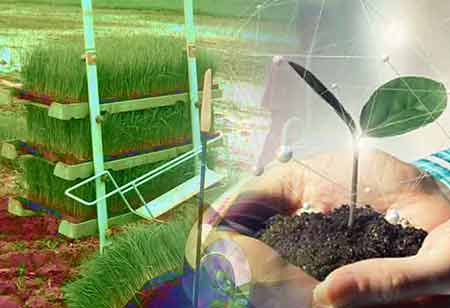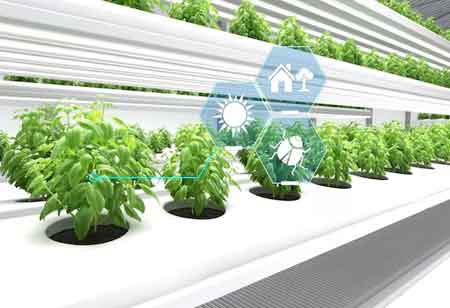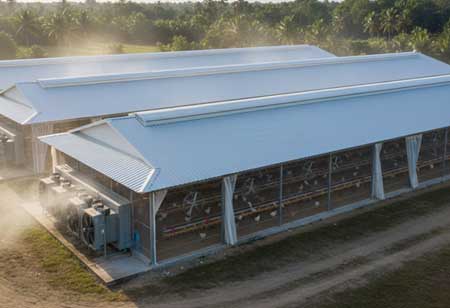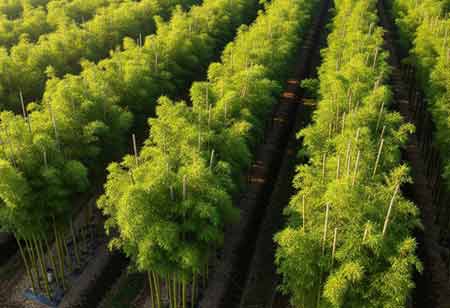Thank you for Subscribing to Agri Business Review Weekly Brief
Profitable Aquaponics Farming Business Plan
The plants gain their nutrients from the nutrient-rich water formed by the fish wastes.

By
Agri Business Review | Wednesday, August 24, 2022
Stay ahead of the industry with exclusive feature stories on the top companies, expert insights and the latest news delivered straight to your inbox. Subscribe today.
Aquaponics system combines aquaculture, the rearing of Fish, and the hydroponics system, the growing of plants without soil
Fremont, CA: The Aquaponics system refers to rearing Fish and plants together in a controlled environment. It combines aquaculture, the rearing of Fish, and the hydroponics system, the growing of plants without soil. In the Aquaponics system, the fish tanks' water is used to grow the plants.
The plants gain their nutrients from the nutrient-rich water formed by the fish wastes. Since the plants are cleaning the water in deriving their nutrients from the wastewater, the water is thus recycled and reintroduced into the fish tanks. Aquaponics is commercially viable when farmers sell fish and plant products like lettuce, tomatoes, and spinach.
A guide to Aquaponics farming.
Today, Aquaponics is turning into popular and attracting many people as a way of growing food because of its sustainability and benefits such as eco-friendly, less use of water, low-cost maintenance, and efficient and organic method of producing food.
The Aquaponics system has grown up and developed not just for hobbyist or backyard gardening but, most importantly, for commercial purposes to sustain the high demand for organic food by the growing population in urban areas.
Why Aquaponics?
• The Aquaponics system employs 90% less water than conventional farming.
• With the Aquaponics system, we can grow anytime, in any weather, anywhere on the planet. Because the aquaponics system recycles the water, we can grow in droughts and areas with little water.
• Environmentally accountable for low water usage.
• The major contribution to the system is Fish, food and water.
• Minor to no chemical usage and Aquaponics requires no synthetic fertilizers and few pesticides.
• Many plants that thrive in Aquaponics are very easy to grow.
• An Aquaponics system is a method to grow your Fish and vegetables simultaneously. First, feed the Fish, and the Fish will feed plants with their waste output. Then, there is no requirement to use fertilizers since the Fish provide rich nutrients for the plants.
• In the aquaponics system, less water is utilized for the crops.
Working on Aquaponics system
In an Aquaponics system, Fish naturally provide the nutrients that plant need to thrive. In an Aquaponics system, Fish are reserved in tanks, and their waste is collected at the bottom; this waste is pumped through a filter to make it into ready food for plants.
Then, the plants are set up in 'grow beds,' which allow the plant roots to dangle in water-absorbing goodness from the fish waste while the leafy heads absorb the goodness from sunlight above.
Most of the hard work you need to put into the Aquaponics system takes place in the first month when you need to regularly check ammonia and pH levels, after which the system requires basic maintenance, so start to enjoy the fruits and vegetables. Also, an Aquaponics system requires little financial input after the initial set-up costs. So growers can reap huge rewards.
Financial strategy for Aquaponics business plan
This section explains the approach you are taking in developing a financial strategy. The financial strategy is classified into the below sections.
1. Expenses
Develop a five-year projection on the annual expenditures for the commercial Aquaponics farm business. The expenses include the marketing, operating, and human resource expenses discussed in the marketing, operating, and human resources strategy section. In addition, expenses should cover administrative expenses like the initial operating expenses, start-up expenses, site preparations, and other expenses.
2. Income
Develop a five-year yearly income projection for the farm. Income must incorporate receipts from sales of products and less loss along with spoilage or products that cannot be sold. In addition, income should include donations, grants, and other sources anticipated to cover the farm's operating expenses.
3. Fixed Assets
Fixed assets include land, buildings, vehicles, furniture, office equipment, computers, fixtures and fittings, plants, and machinery. Then, these items are devalued over time for tax purposes. But, first, establish a five-year projection of fixed assets.
Possible risks to the successful operation of the Aquaponics farm
You need to recognize and evaluate the potential risks that can impact the business plan's success. These have the potential production risks related to crop failure or unexpected low yield, marketing risks related to competitors' actions, like lower competitors' pricing and what can be done to minimize these potential risks.
How do Aquaponics farms make money?
The different methods are suitable for current or future strategies.
The main ways include;
• Selling Plants
• Aquaponics Classes
• Selling Fish
• Selling System
There may be other ways, but these are the most common ones. Like any business, you need experience or to involve someone with the business acumen to run a commercial Aquaponics business successfully.
Although being a hobby grower and getting excited by the coolness of the Aquaponics system does not guarantee success, hard-headed business decisions based on experience and knowledge do. Unfortunately, many beginners with no business experience see their vegetable growing and fish-eating but don't realize they are slowly pushing the money down the drain.





